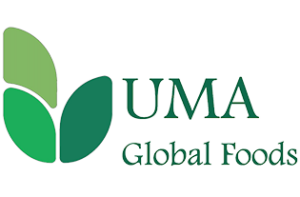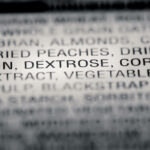ANTIOXIDANTS: CUPID TO THE RESCUE OF LOVE-LOST FREE RADICALS
Antioxidants: Cupid to the rescue of love-lost free radicals
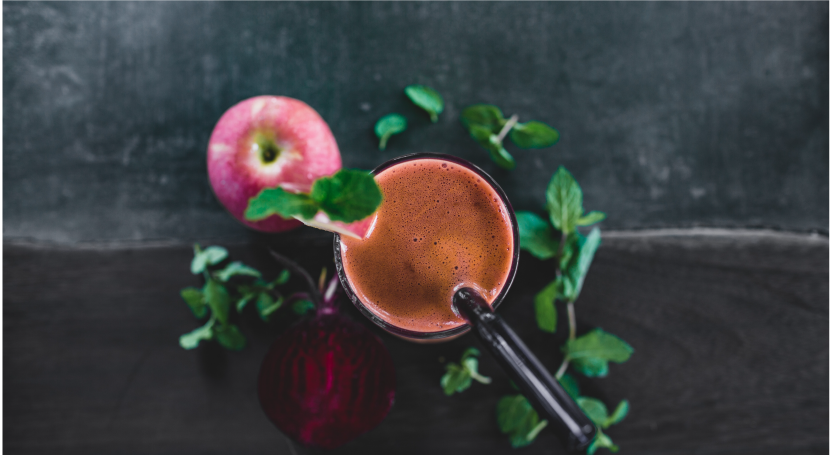
Antioxidants in foods are not just desirable but critical to our very survival. But what are they? To understand antioxidants we need to learn another term: “free radical”. When we eat or when we are exposed to cigarette smoke, pollution, or radiation our body produces oxidative stress. This stress causes the 2 electrons in Oxygen to split and they get “free”. This electron hates being alone and travels through our bodies looking for a partner and in the process triggers damage to our cells, tissues and organs and creates chronic inflammation.
Enter the savior, the knight in shining armor, the antioxidant. These are healthy compounds in some foods including some wholegrains, lentils, nuts, fruits and vegetables. And like a Cupid, they shoot an electron to the free radical and pair them again. Happy ending!
Examples of antioxidants include Vitamin C & E, Selenium, Lycopene, Beta carotene, a group of plant pigments called Flavonoids, the mineral Copper etc. Let’s examine some antioxidant rich foods today and help the free radicals in our body “hook up”!
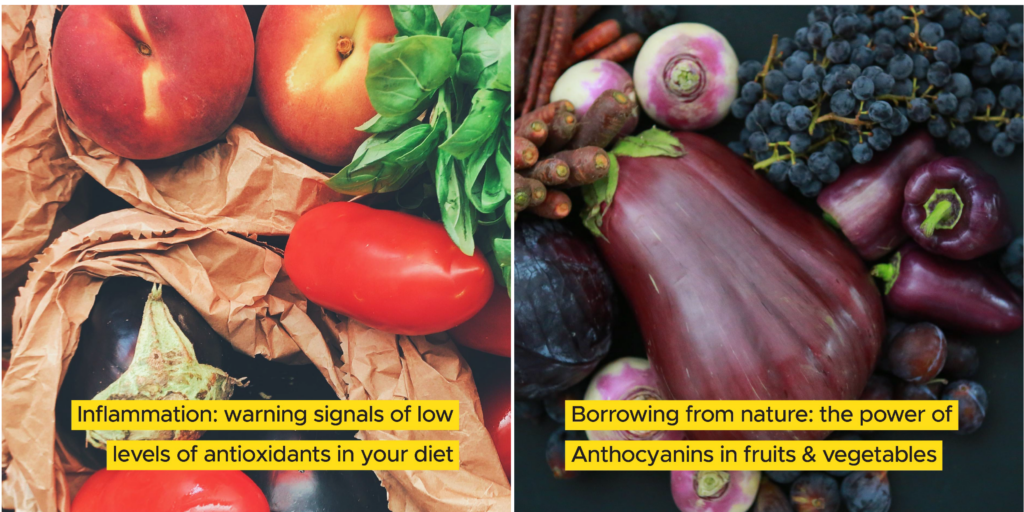
Inflammation: warning signals of low levels of antioxidants in your diet
Antioxidants are compounds that, like the name, inhibit or delay oxidative stress of cells. Oxidation not only ages or destroys cells but also causes lipid, protein and DNA alteration which in turn leads to chronic diseases. Inflammation is the key factor driving diseases such as diabetes, cancer, cardiovascular diseases, eye disorders, arthritis, obesity, autoimmune diseases, and inflammatory bowel disease.
Borrowing from nature: the power of Anthocyanins in fruits & vegetables
Produced by plants to protect against stresses like UV light and extreme temperatures, anthocyanin is estimated to have 50 times the antioxidant activity of well-known vitamins. The compound has been widely studied for its effectiveness in reducing free radical damage, and its protection of ?-cells that maintain blood glucose levels. Common foods high in anthocyanins include grapes (and red wine too), apples, turnips, red cabbage and eggplant.
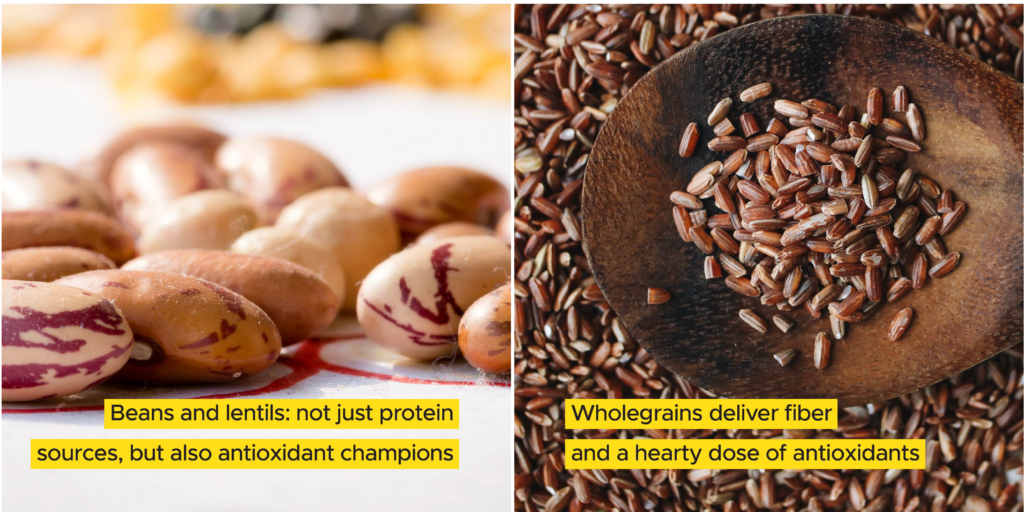
Beans and lentils: not just protein sources, but also antioxidant champions
Legumes are great for cell health, as they contain phenolic compounds that destroy free radicals, inhibit cell oxidation, reducing systemic inflammations. Interestingly, a study done by University of Guelph in Canada revealed that while all beans and lentils are good antioxidants, darker beans like black, pinto, kidney, navy, have more antioxidant activity, gram for gram, than the other beans, due to the flavonoids or pigments in their outer layer.
Wholegrains: deliver fiber, but also a hearty dose of antioxidants
We tend to associate vegetables & fruits with beneficial antioxidants. However, a Cornell study revealed that wholegrains contain antioxidants equal to or exceeding those in veggies and fruits. For example, they found corn has almost twice the antioxidative activities of apples, while wheat and oats equal broccoli and spinach. But it’s important to avoid refined grains, because wholegrains are the ones containing lignans, ferulic acid, sulfur, which protect cells from oxidation.
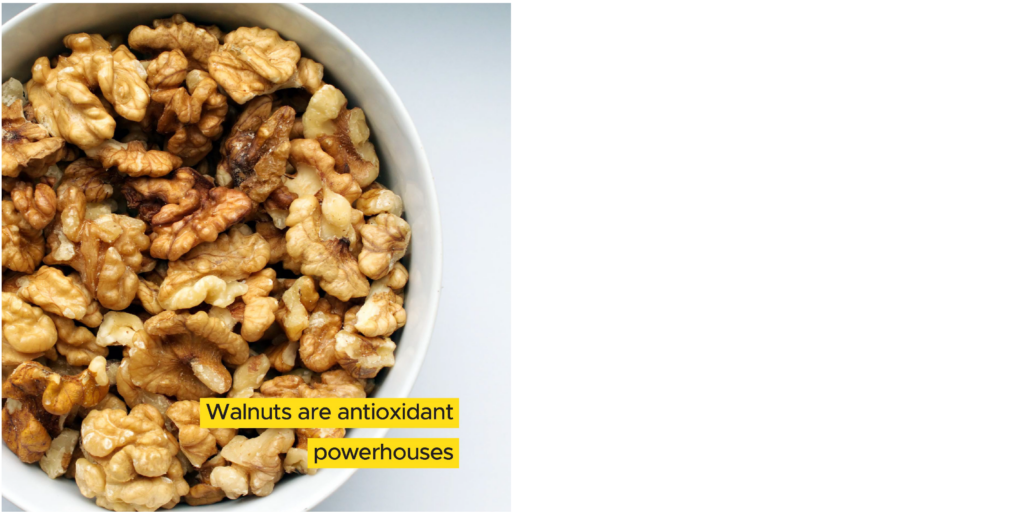
Walnuts are antioxidant powerhouses
Walnuts are rich in omega-3 fatty acids, a precursor for messaging molecules called prostaglandins that regulate inflammatory responses in our body. The fatty acids are highly susceptible to oxidation – in turn, the plant produces a variety of phenolic acids, tannins and flavonoids that protect against this oxidation. We can enjoy this same benefit with a daily serving (just about 7 whole walnuts). Be sure to include the brown walnut skins – the slight bitterness is due to its rich phenol content!
